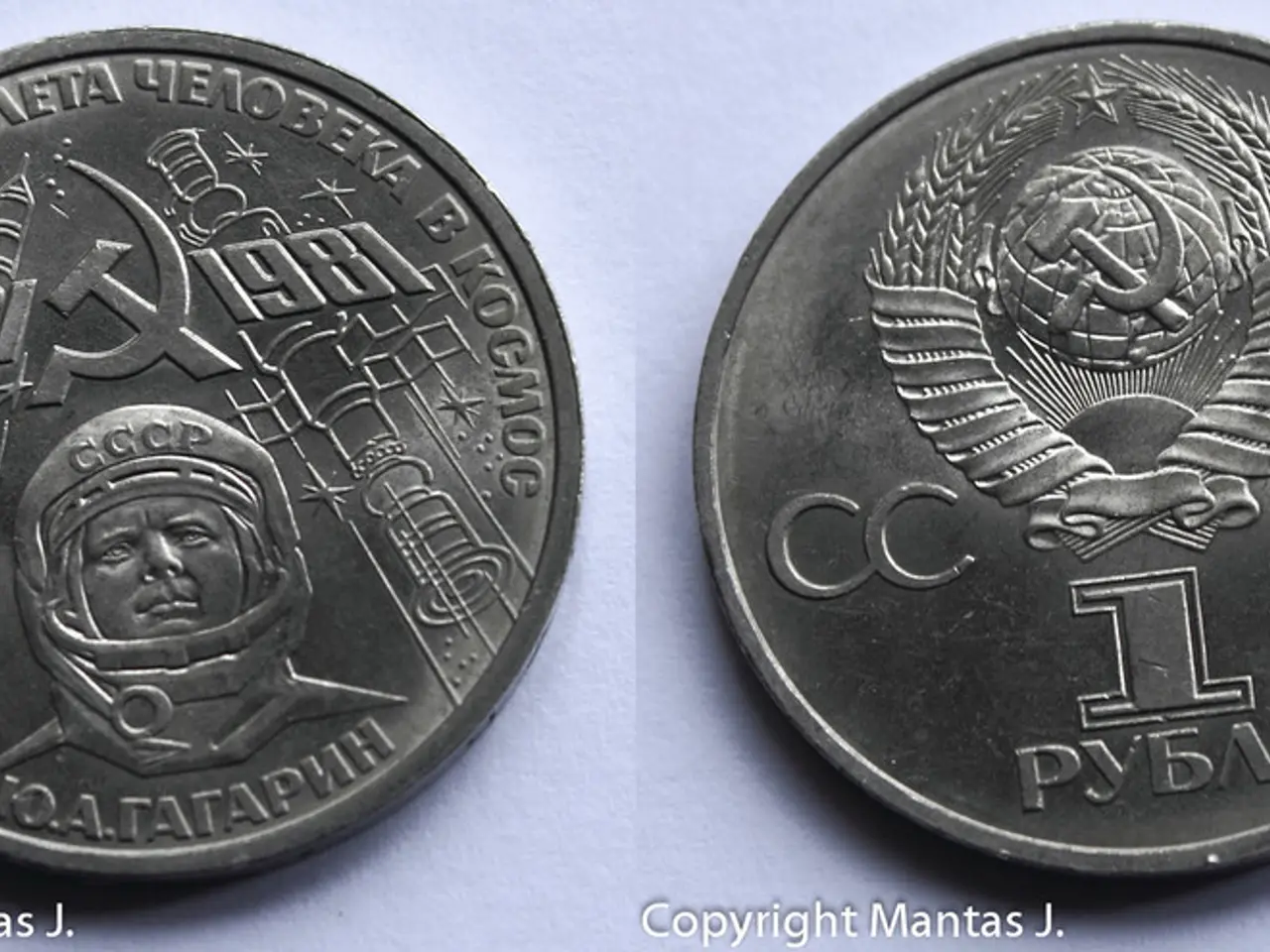Digital asset managers broadly decline acceptance of digital assets
The global financial landscape is undergoing a significant shift, with various currencies and assets vying for a larger role in the international economy. However, the US dollar continues to hold its ground as the dominant reserve currency, according to a consensus among economists and financial experts.
Jesper Koll, global ambassador and expert director of Monex Group, Japan, believes that de-dollarization could provide an opportunity for Japan to gain more prominence. Pierpaolo Benigno and Edoardo Reviglio, on the other hand, argue that Europe has a strategic opportunity to develop its own safe asset. These views, however, do not necessarily challenge the US dollar's dominance.
The Chinese Renminbi (RMB) is one potential alternative, given China's large economy. However, its growth as a global currency is constrained by capital controls, limited convertibility, and relatively low international investor confidence in Chinese institutions. Despite efforts by China to promote the RMB internationally, its global use remains limited compared to the dollar. Thus, economists see the RMB as a possible longer-term alternative but not imminent.
The euro and Japanese yen, while significant, do not currently match the dollar’s dominance or liquidity. Recent depreciations have weakened them relative to the dollar, limiting their immediate appeal as a dominant alternative.
BRICS countries are pursuing alternatives to reduce dollar dependency, but their currencies do not currently have the necessary scale, stability, or global acceptance to replace the dollar.
Digital currencies, particularly stablecoins, are rising in prominence. However, stablecoins, which constitute about 99% of stablecoin market capitalization, are mostly dollar-denominated. Private and central bank digital currencies (CBDCs) could potentially disrupt dollar dominance, but this remains speculative and technologically evolving.
Gold, a traditional store of value, is considered too volatile and lacks the liquidity and usability in trade that the dollar provides for a global currency role. It might serve as a hedge but not a direct transactional alternative.
Increasingly, experts acknowledge a future where the global monetary system might become more multipolar, with no single dominant reserve currency but multiple coexisting currencies. This could reflect geopolitical shifts, technological innovations, and greater economic diversification.
Despite some weakening since early 2025, the dollar remains dominant, accounting for about 60% of global reserves. It benefits from the size and stability of the US economy, deep liquid financial markets, and global trust. Unless large structural disruptions occur, the dollar is expected to remain the principal international currency for the foreseeable future.
In summary, while alternatives like the RMB, euro, cryptocurrencies, and BRICS currencies are being explored and have some regional or niche roles, none currently represent a fully realistic replacement for the US dollar on a global scale. The US dollar’s dominance is likely to persist, though evolving towards a more multipolar and technologically influenced global monetary environment.
[1] OMFIF's Global Public Investor 2025 [2] OMFIF's Global Public Investor series [3] Various reports and expert opinions from OMFIF, Citi, Capital Group, and State Street Investment Management [4] Reports from the senior economist at OMFIF and Mark Sobel, US chair at OMFIF [5] Reports from Jens Søndergaard, currency analyst at Capital Group and Geoffrey Yu, senior EMEA markets strategist at BNY.
- The US dollar's dominance as the international economy's leading reserve currency persists according to economists and financial experts, despite growing interest in alternatives.
- The potential for de-dollarization presents an opportunity for countries like Japan to increase prominence, but the dollar's strength remains undisputed.
- Europe may have a strategic opportunity to develop its own safe asset, yet this does not necessarily challenge the US dollar's dominance.
- The Chinese Renminbi (RMB) has limitations that restrict its growth as a global currency, such as capital controls, limited convertibility, and low international investor confidence.
- Digital currencies, particularly stablecoins, could disrupt the dollar's dominance in the future, but their potential remains largely speculative due to technological constraints.
- Gold, due to its volatility and lack of liquidity and usability in trade, is not a realistic replacement for the US dollar in a global currency role.
- Experts foresee a future where the global monetary system becomes more multipolar, with multiple coexisting currencies as a result of geopolitical shifts, technological innovations, and economic diversification.
- Despite some weakening since early 2025, alternative currencies like the RMB, euro, cryptocurrencies, and BRICS currencies do not currently represent realistic replacements for the US dollar on a global scale, according to reports, expert opinions, and research from organizations such as OMFIF, Citi, Capital Group, State Street Investment Management, Jens Søndergaard, and Geoffrey Yu.




